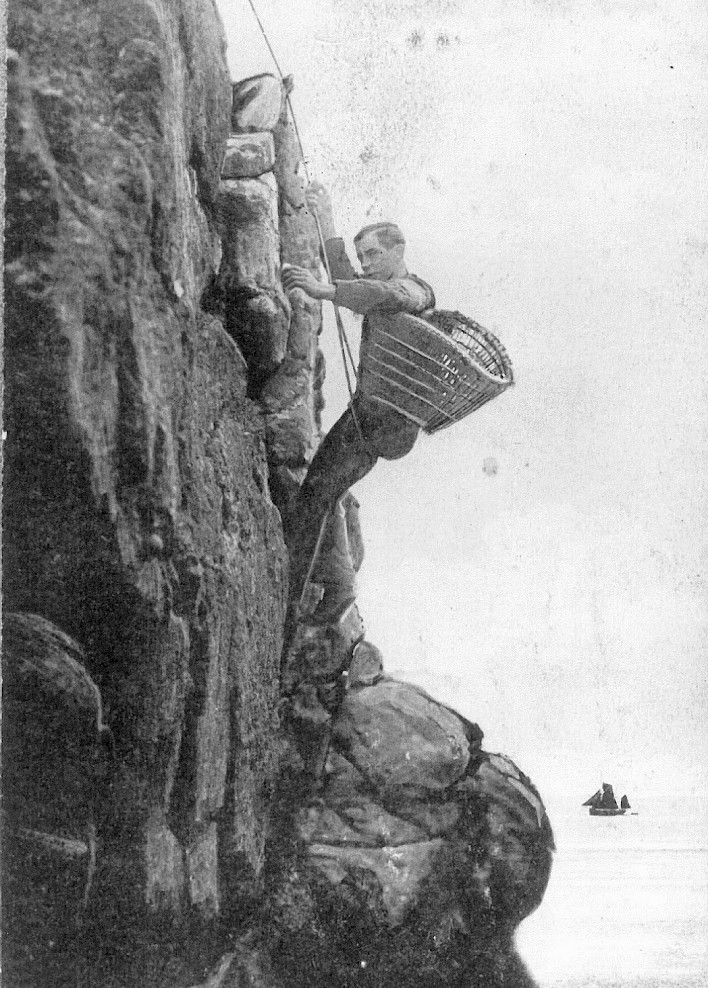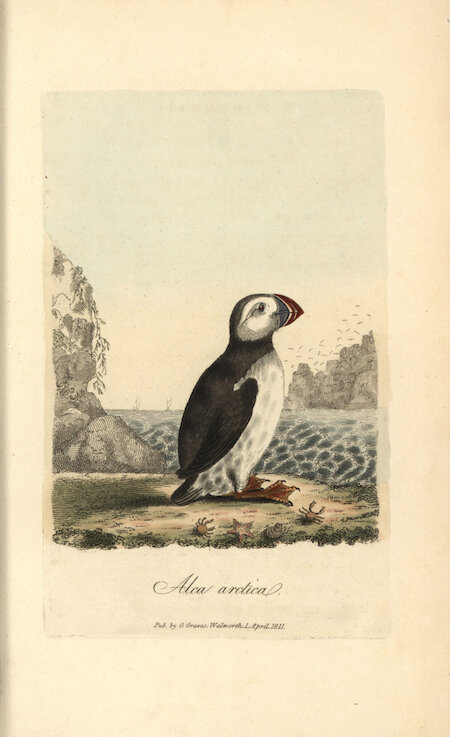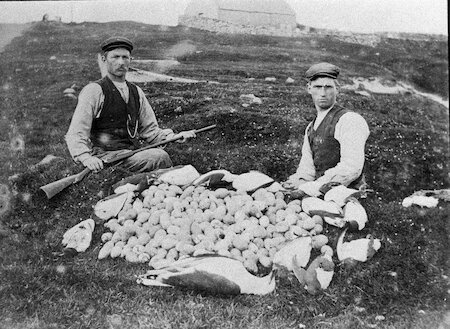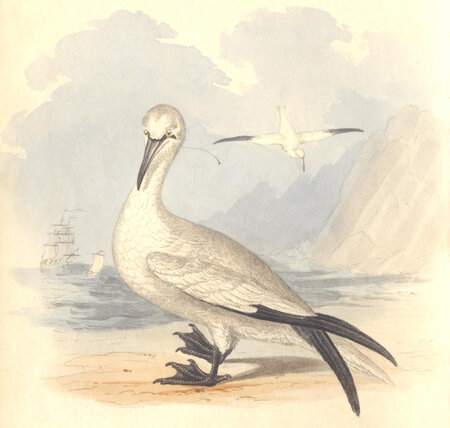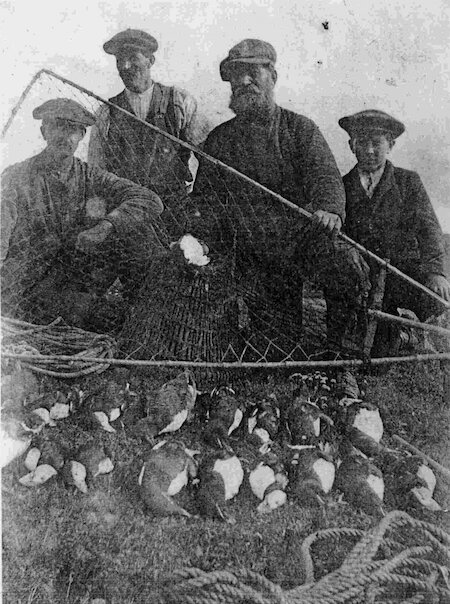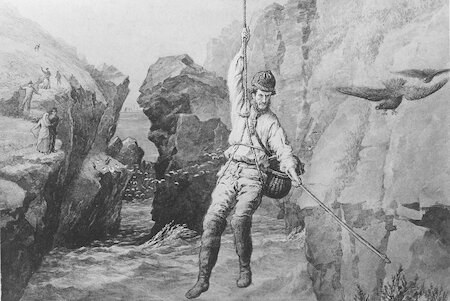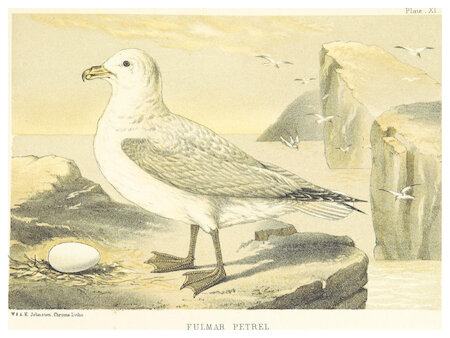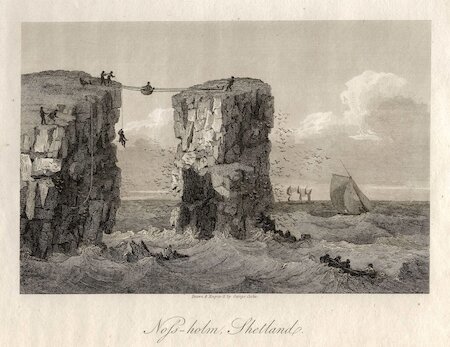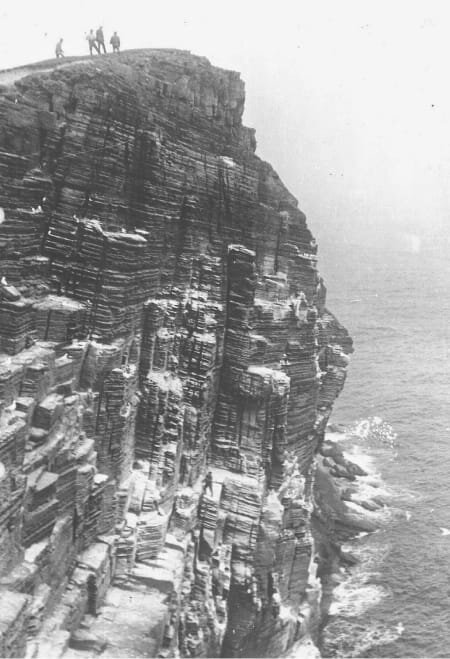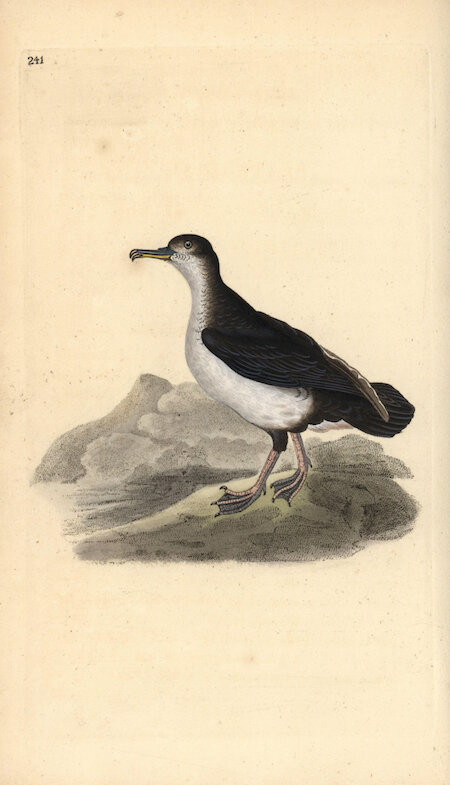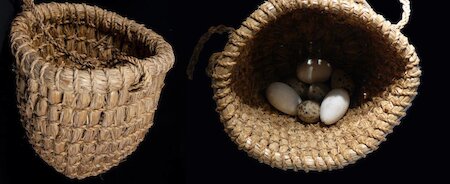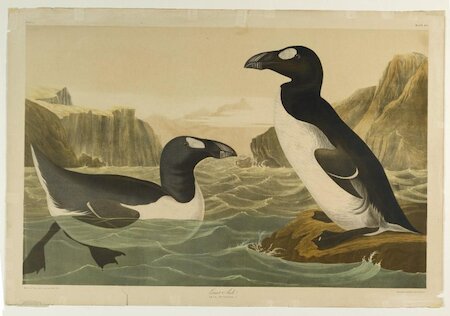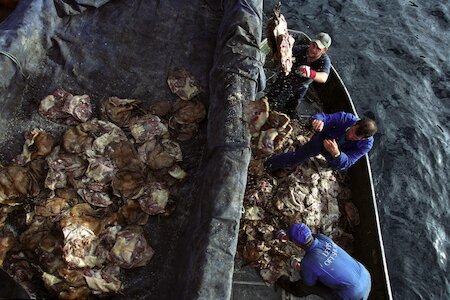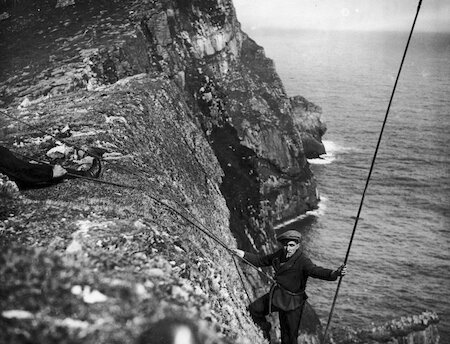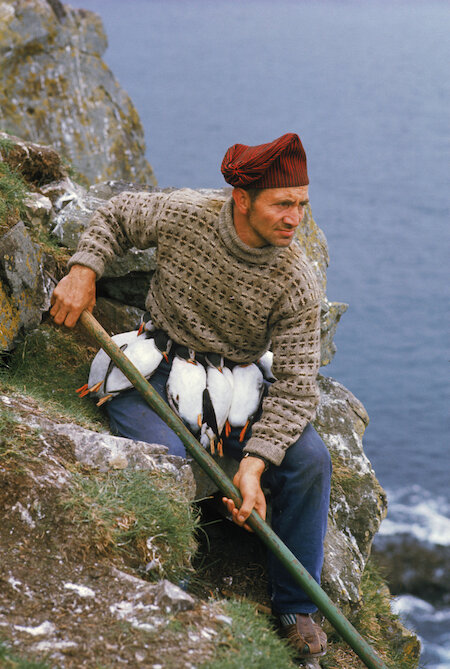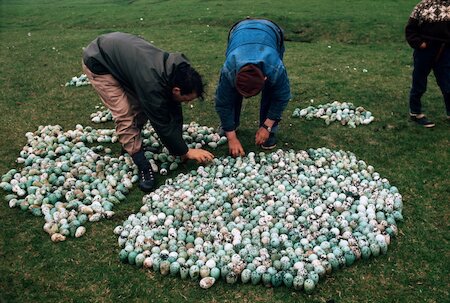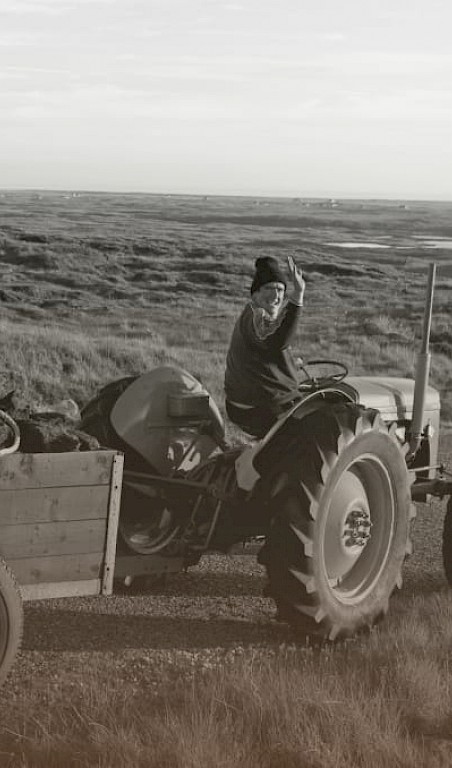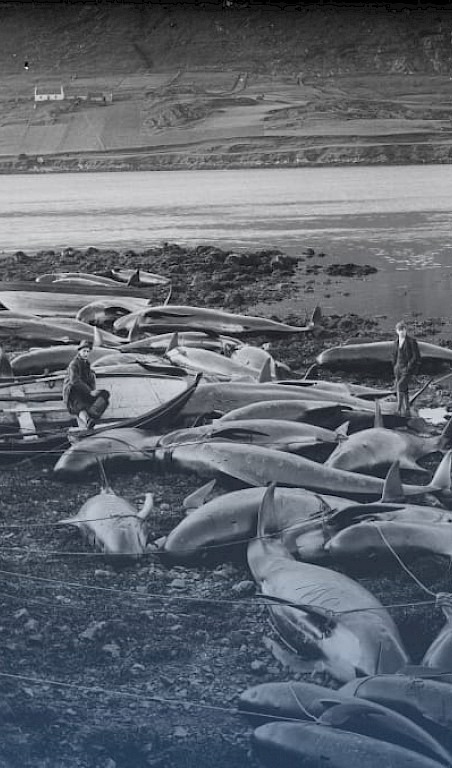Why not catch birds?
Scotland’s islands are rich in habitats, on holms, cliffs, and beaches. People relied on seabirds’ meat and eggs for food to extend their limited resources. Varied geography meant some districts harvested birds and eggs that other places did not.
People ate the meat and eggs and used feathers for bedding and fishing lures. At Pabbay, near Harris, puddings made from seafowl fat were towed behind a boat’s stern so the oily surface quelled breaking water. Bird fat was used as a wound dressing for people or livestock, and North Rona people paid rent with smoked wildfowl.
St Kilda was famed for birds, and people relied on them as others did on fish. Islanders made bait from puffins and lamp oil from fulmars. They made sewing thread from feathers, and shoes from gannets.
A Timeless Scene...
“Men of Ness in Lewis sail [to Sulisker] and tarry there 7 or 8 days and fetch with them home their boatfull of dry fowls with wild fowl feathers.”
Lewis, 1549
“They never trust much to rope nor stake. Once they have got footing, they depend more on their own climbing than any rope… Few who make this practice for life die a natural death.”
Foula, 1774
“[Shags] are esteemed very good food; it is common practice to bury them for four-and-twenty hours in the earth, which is said to render them tender, and to abstract the fishy taste.”
Birsay, 1804
Fowling was in harmony with ecology; it continued for thousands of years, and birds remained plentiful. From around 1800 things became commercialised; visiting naturalists collected species for stuffing, and amongst Orkney exports were pens, down, feathers.
After a century of destruction, laws came to protect birds, especially the Wild Birds Protection Order 1902 and the Protection of Birds Act 1954. Today, overfishing, pollution, and habitat loss are new threats to birds.
Shetland, Orkney, and Hebridean fowling was dying-out before any legislation. As island culture changed, culture drew nearer to outside society, where eating birds and eggs wasn’t mainstream. Also, prosperity meant folk didn’t need to catch wildfowl. Fowling still continues in Faroe, and islanders consider it more ethical to eat birds that haven’t lived their lives like battery hens.
How islanders risked their lives to feed the family: the terrifying peril of hunting seabirds and gathering their eggs in the cliffs of Shetland, Orkney, and the Hebrides.
Dods MacFarlane’s fascinating reminiscence of his part in the gannet hunt off Lewis – a centuries-old tradition that still survives.
Image Credits
Our range of images and photography are provided by:
